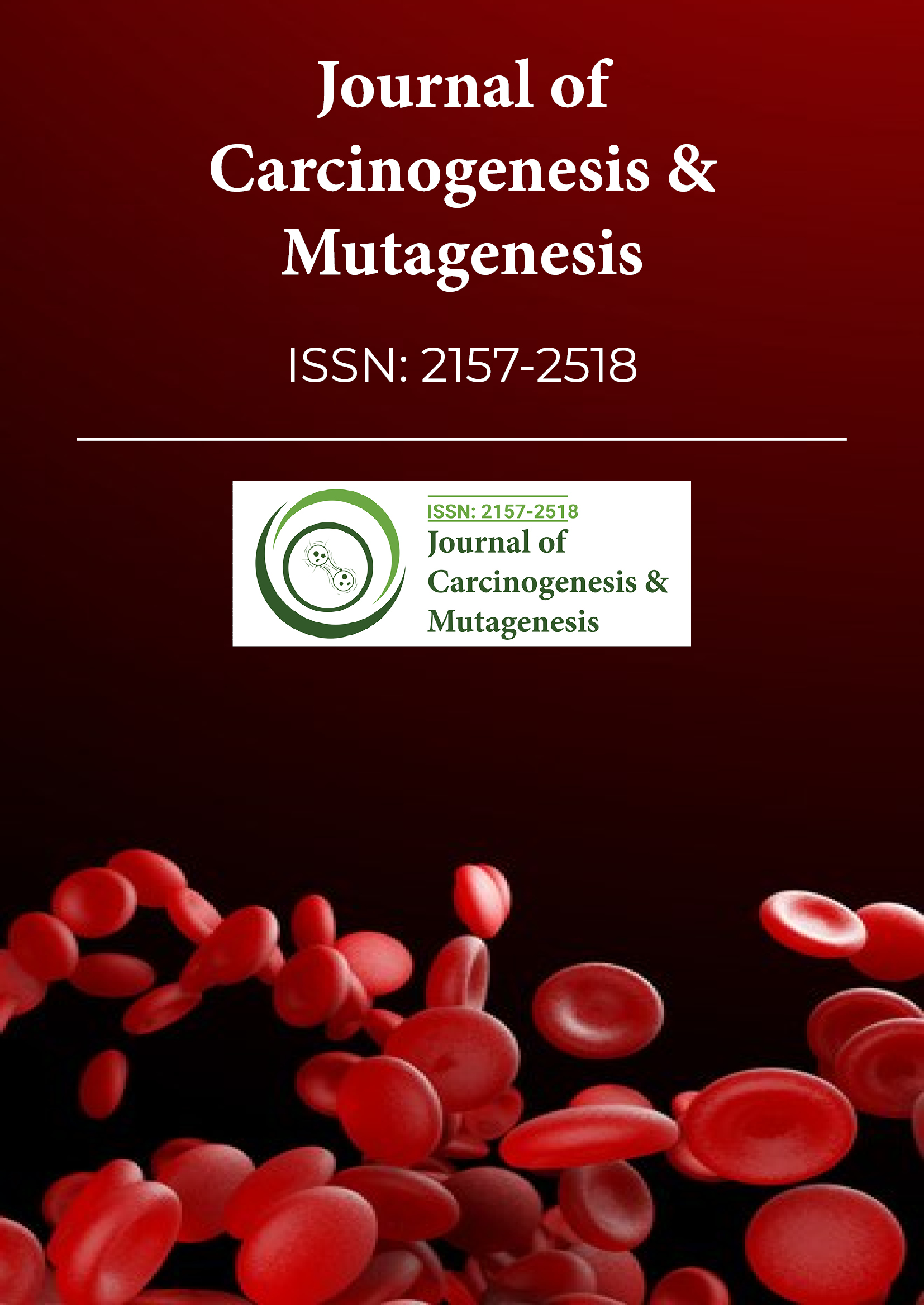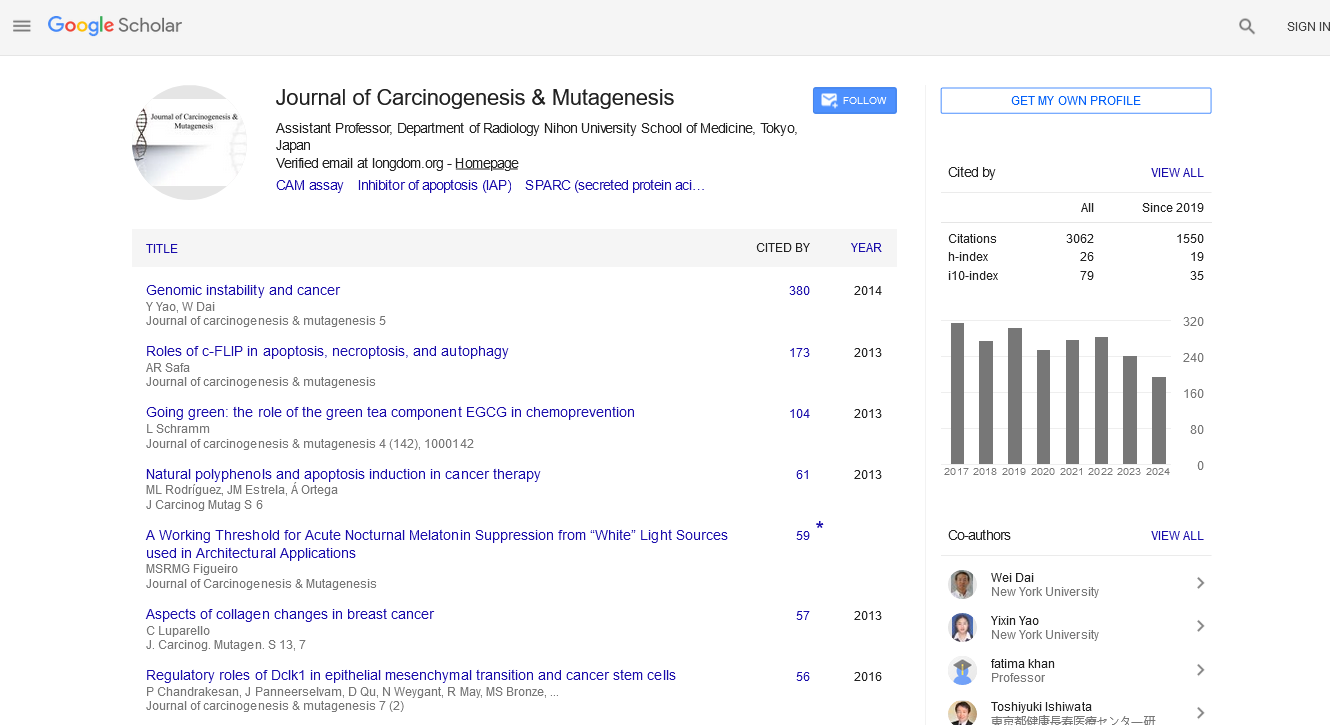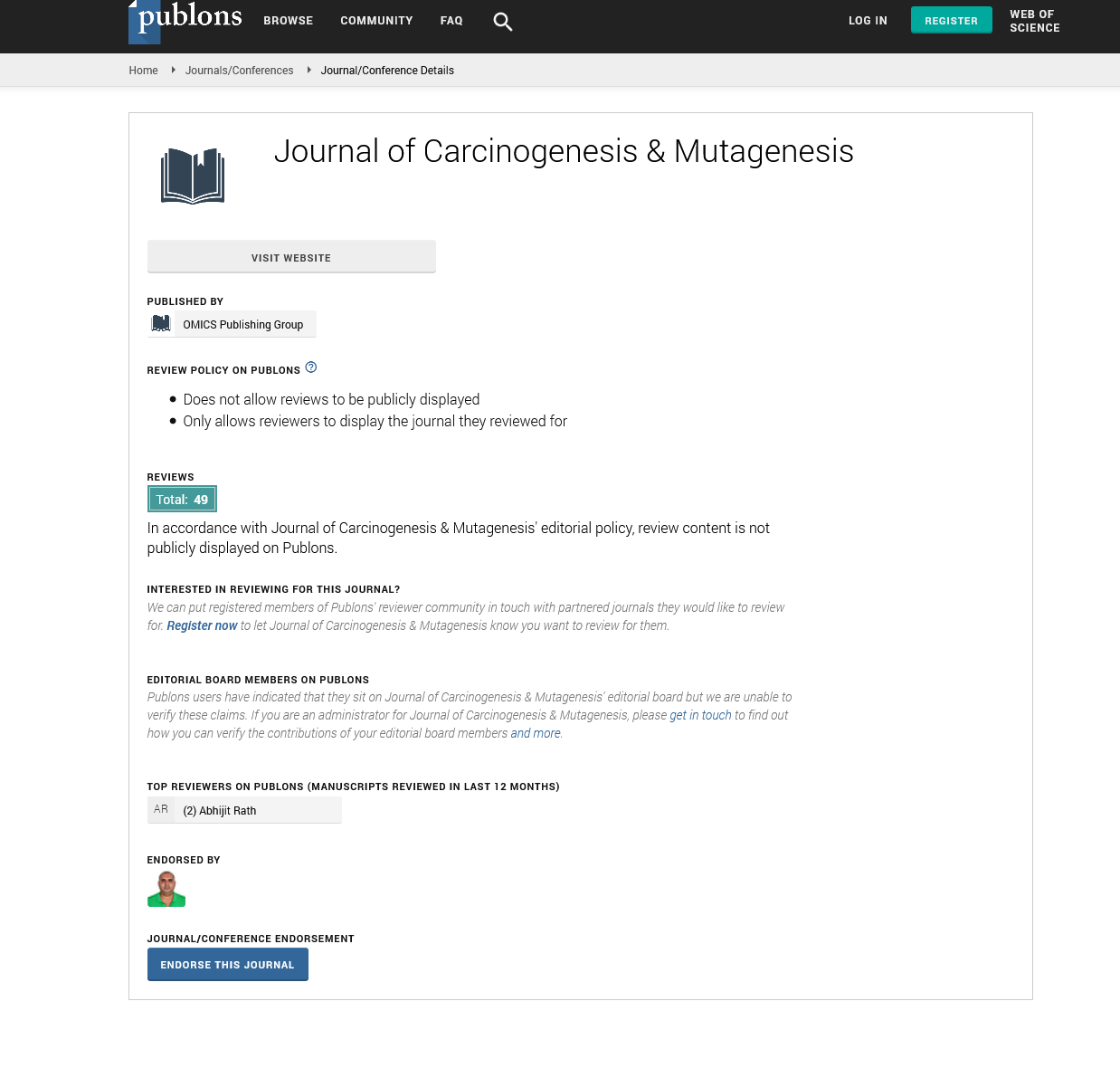Indexed In
- Open J Gate
- Genamics JournalSeek
- JournalTOCs
- Ulrich's Periodicals Directory
- RefSeek
- Hamdard University
- EBSCO A-Z
- OCLC- WorldCat
- Publons
- Geneva Foundation for Medical Education and Research
- Euro Pub
- Google Scholar
Useful Links
Share This Page
Journal Flyer

Open Access Journals
- Agri and Aquaculture
- Biochemistry
- Bioinformatics & Systems Biology
- Business & Management
- Chemistry
- Clinical Sciences
- Engineering
- Food & Nutrition
- General Science
- Genetics & Molecular Biology
- Immunology & Microbiology
- Medical Sciences
- Neuroscience & Psychology
- Nursing & Health Care
- Pharmaceutical Sciences
Commentary - (2025) Volume 0, Issue 0
Metabolic Alterations in Head and Neck Cancer: Insights into Tumor Biology and Therapeutic Strategies
Peng Li*Received: 22-Jan-2025, Manuscript No. JCM-25-28722; Editor assigned: 24-Jan-2025, Pre QC No. JCM-25-28722 (PQ); Reviewed: 31-Jan-2025, QC No. JCM-25-28722; Revised: 31-Jan-2025, Manuscript No. JCM-25-28722 (R); Published: 21-Feb-2025, DOI: 10.35248/2157-2518.25.16.003
Description
Head and Neck Cancer (HNC) encompasses malignancies of the oral cavity, larynx and pharynx. It is one of the six most common cancers worldwide, contributing significantly to cancer-related morbidity and mortality. Common risk factors for HNC include tobacco use, excessive alcohol consumption, betel nut chewing and viral infections, particularly from Human Papillomavirus (HPV) and Epstein-Barr Virus (EBV). Over recent years, significant progress has been made in understanding the biology of these cancers, particularly with respect to their distinct metabolic characteristics. Tumor cells in head and neck cancer exhibit several metabolic alterations that differentiate them from normal cells, which opens new avenues for potential therapeutic intervention. This review aims to explore these metabolic changes and discuss their implications for treatment strategies.
Alterations in glucose metabolism
One of the hallmark features of cancer cells, including those in head and neck cancers, is altered glucose metabolism. This phenomenon, known as the Warburg effect, describes how tumor cells preferentially utilize glycolysis for energy production, even in the presence of sufficient oxygen. This shift from oxidative phosphorylation to glycolysis allows cancer cells to meet their increased energy demands and support rapid cell division. In head and neck cancer, studies have shown that the upregulation of glucose transporter proteins (such as GLUT1) and key glycolytic enzymes (such as hexokinase 2) is common. These alterations contribute to an enhanced glycolytic rate, for biosynthesis and growth. Targeting the enzymes involved in glycolysis, such as hexokinase or lactate dehydrogenase, has been suggested as a potential therapeutic strategy to inhibit tumor growth by limiting the metabolic resources required for cancer progression.
Amino acid metabolism
Amino acid metabolism also plays an important role in head and neck cancer. Tumor cells require an increased supply of amino acids to sustain their rapid growth and protein synthesis. Glutamine, in particular, is a key amino acid involved in supporting the metabolic needs of cancer cells. Glutamine metabolism supports biosynthesis, energy production and redox homeostasis, all of which are essential for the survival of cancer cells in the harsh tumor microenvironment.
Conclusion
Head and neck cancers are characterized by distinct metabolic alterations that provide opportunities for therapeutic intervention. These include changes in glucose, amino acid and lipid metabolism, as well as alterations in the immune system that create a favorable environment for tumor growth. By targeting these metabolic pathways, we can potentially slow tumor progression, improve patient outcomes and develop more effective therapeutic strategies. As research continues to uncover the complexities of metabolic reprogramming in cancer, the development of targeted therapies based on these findings could lead to new, more effective treatments for patients with head and neck cancer.
Citation: Li P (2025) Metabolic Alterations in Head and Neck Cancer: Insights into Tumor Biology and Therapeutic Strategies. J Carcinog Mutagen. S48:003.
Copyright: ©2025 Li P. This is an open-access article distributed under the terms of the Creative Commons Attribution License, which permits unrestricted use, distribution and reproduction in any medium, provided the original author and source are credited.


